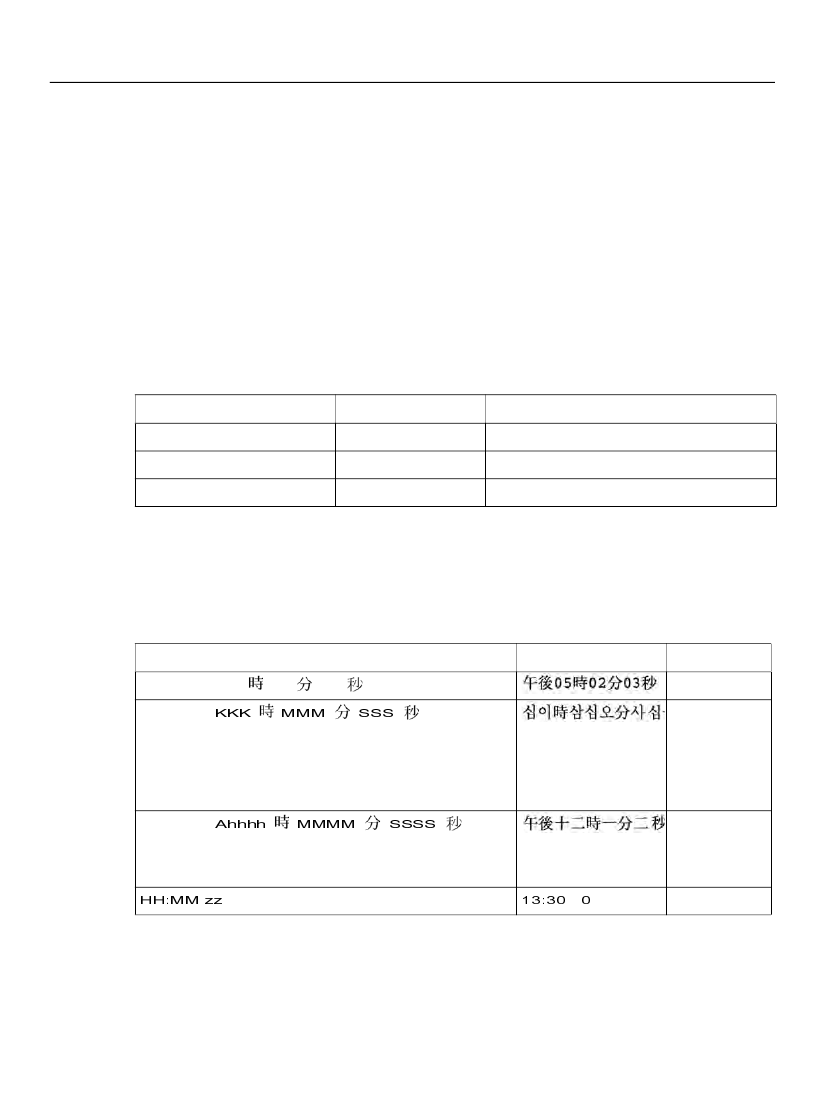
XFA Specification
Chapter 24, Picture Clause Specification
Picture Clause Reference
925
When input parsing with time picture clauses, a successfully parsed input value is returned as an ISO local
time string of the form
HH[MM[SS[.FFF][z]]]
HH[MM[SS[.FFF][+HH[MM]]]]
HH[MM[SS[.FFF][-HH[MM]]]]
HH[:MM[:SS[.FFF][z]]]
HH[:MM[:SS[.FFF][-HH[:MM]]]]
HH[:MM[:SS[.FFF][+HH[:MM]]]]
Square brackets denote optional elements.
Examples of Input Parsing
As examples of input parsing time values, consider the following examples:
Picture clause
HH:MM
H.MM 'Uhr'
h:MM:SS A Z
Input value
18:00
12.59 Uhr
1:05:10 PM PST
Parsed result
18
12:59
17:05:10
Note:
The return value in the last example will vary with the platform's timezone at the time the platform
was parsing the input; the displayed result comes from a platform running on EDT.
Examples of Asian Output Formatting and Input Parsing
The following examples illustrate the process of input parsing with time picture clauses in a Asian locale.
Picture clause
time(ja){Ahh'
'MM'
'
'
'DD'
'
'
'}
'
'}
Input value
Parsed result
17:02:03
12:35:46
This example specifies ideographic hours (24-hour clock),
minutes and seconds. Although the picture symbols do not
specify tens-rule, the numbers use it because all Korean
ideographic numbers use tens rule.
This example specifies tens-rule ideographic hours, minutes
and seconds. The hours are meridiem.
+ 1
a.The parsed result reflects the current time zone. This result indicates the user resides in the Central European
Time timezone. If the user resided elsewhere, the parsed result would differ.
0 03:31
SSSS
MMMM
hhhhA
time(ja){
'
'
'
SSS
'
MMM
KKK
time(ko){
'
'}
12:01:02
13:30:00+01
a
zz MM:HH